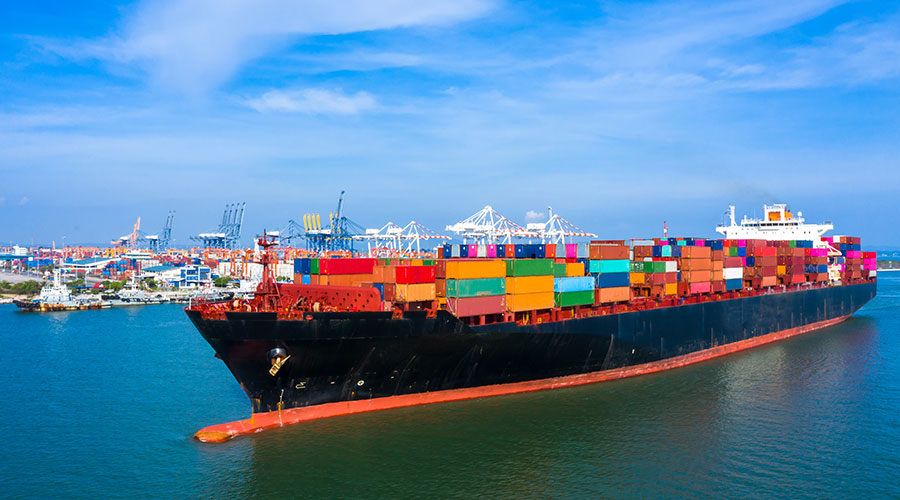


In 2024, the global container shipping market performed strongly, with this growth mainly driven by the Red Sea crisis. According to Clarkson data, about 700 ships sail around the Cape of Good Hope for most of the year, resulting in a 12 percent "distance increase" and driving an 18 percent increase in global TEU shipping miles traded.
Underlying TEU trade volumes grew by more than 5% compared to 2023, underpinned by a strong rebound of 7.5% on the backbone routes and solid intra-regional growth of 4.0%, further strengthening the market performance.
Increased trade demand between Asia and developing economies is also an important driver. In addition, the practice of "front-loading", in which goods are transported in advance to avoid potential disruptions, has significantly boosted freight volumes. Despite a slight decrease in port congestion to 3.0%, some "hot spots" still take up about 4% of fleet capacity at certain times.
Strong market performance
Container freight rates increased significantly in 2024, and the SCFI spot freight index performed strongly throughout the year. Key indicators show that the SCFI Composite Index has risen a whopping 149.2% year on year, from its low in mid-December 2023 to 3,734 points in July 2024, which is about 3.7 times the mid-December 2023 level. Eastbound trans-Pacific freight rates nearly reached a record high during the COVID-19 pandemic in July 2024.
The chartering market is also doing well. The time charter Yield Index rose by about 50% year-on-year in 2024 to reach 182 points by mid-July, about three times the mid-December 2023 level, and largely maintained its gains in the second half of the year. In terms of charter revenue, the 1,700 TEU feeder vessel charter increased by 41.2% to US $18,463 / day; Panamax rentals of 4,400 TEU increased 90.2% to $40,452 per day; New Panamax rentals of 9,000 TEU increased 45.0% to $75,512 per day.
In addition, the market for the purchase and sale of container ships was active in 2024, with the total transaction volume for the year reaching 1 million TEU, the third highest annual total transaction volume in history. Driven by continued market activity, the value of second-hand ship assets rose 40 per cent year on year, while the new ship price index also rose 12.7 per cent year on year.
Green renewal and supply growth
Despite global container fleet capacity growing by more than 10% in 2024, delivering a record 2,904,600 TEU, the fastest growth in 16 years, the market remains strong. Dismantling volume remained low, at just 83,000 TEU. The ship booking boom in 2021-2022 continued, with new orders totaling 4.3521 million TEU for the year, up 172.9% year-on-year, and new ship investment hitting a record high of $54 billion. It is worth noting that the current global order book has reached 8.3 million TEU, an all-time high (27% of the fleet, down from more than 60% in 2007), of which 4.8 million TEU are scheduled for delivery in 2027 or later.
Future outlook: Opportunities and challenges coexist
Looking ahead to 2025, there are still many uncertainties in the market. The potential recovery of the Red Sea route will be in focus, and the market may face the risk of weakening if a large number of vessels are re-routed through the Red Sea route. In addition, geopolitical factors such as changes in US trade policy (such as higher tariffs or a possible resumption of the US-China trade war) will also be important drivers of demand changes. The risk of supply chain disruptions (although the US East Coast port strike was avoided recently) and future changes in alliance structure will affect the supply and demand balance.
On the supply side, the further expansion of the fleet and the green fleet renewal program will continue to dominate the agenda. Despite record deliveries in 2024, the market still needs to deal with supply-demand balance pressures. Especially with the gradual delivery of current orders, it is expected that new capacity in the next few years may bring certain challenges to the market.





